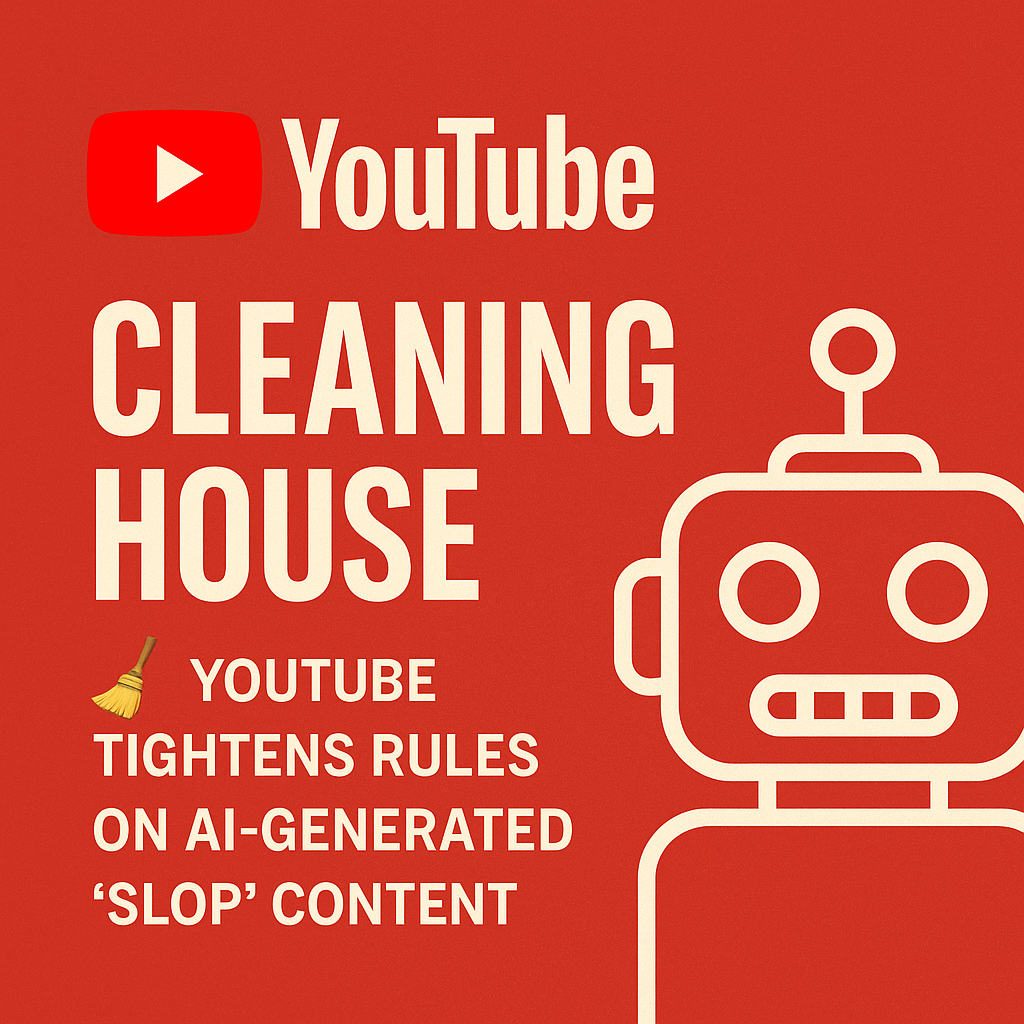YouTube’s crackdown on “inauthentic” content marks a strategic shift in the platform’s fight against low-effort, AI-generated media. As of 15 July, the company will update its YouTube Partner Program (YPP) monetisation policies, targeting mass-produced and repetitive content - much of it now made possible by generative AI tools.
For brand marketers, recruiters, and content strategists, this policy update is more than a tweak to platform guidelines. It signals a growing platform-wide push to preserve quality, trust, and authenticity in the age of synthetic content.
📊 Supporting Stats
AI content is booming: According to Goldman Sachs, generative AI could automate up to 25% of content creation across industries by 2025.
Low-quality content is on the rise: A 2024 report from 404 Media uncovered that a viral YouTube true crime channel was entirely AI-generated, sparking user backlash and wider platform scrutiny.
Trust is fragile: Research from Edelman’s Trust Barometer shows that 61% of global consumers say they would lose trust in a platform if it profits from misleading or fake content.
✅ Pros - What’s Working?
Clarification, not overreach: YouTube insists this is a “minor update” designed to provide clearer examples of inauthentic content. This could help creators better navigate what’s monetisable.
Spam deterrence: Cracking down on mass-produced AI content helps reduce spam-like experiences for users, which could increase watch time for high-quality content.
Brand protection: For advertisers, clearer boundaries help ensure their ads don’t appear alongside deepfakes, misinformation, or AI-generated “slop.”
⚠️ Cons - What Are the Limitations?
Unclear enforcement: The actual policy language hasn’t been released, which creates uncertainty for creators and agencies alike.
Reaction and remix grey areas: While YouTube says reaction videos and clip commentary are safe, the subjective nature of what counts as “original” could lead to over-moderation.
Risk of over-correction: Without nuance, some small creators using AI ethically could be penalised alongside bad actors.
🔍 Opportunities - What Should Brands Focus On?
Authenticity as currency: This policy shift reinforces that audiences (and platforms) value originality. Brands investing in distinctive, human-led content will stand out.
Human-AI hybrids: AI isn’t banned - but lazy automation is. Brands can explore ethical, creative AI integration (e.g. voice cloning with disclosure, AI-enhanced scripting) that complements rather than replaces human input.
Content audits: Now is a smart time to evaluate brand channels and partnerships for content integrity and alignment with evolving YPP standards.
🚧 Challenges - What Barriers Persist?
Platform inconsistency: YouTube’s track record of enforcement is mixed. Scams, deepfakes, and AI spam still surface despite tools for reporting them.
Speed of AI innovation: AI video creation is advancing faster than moderation systems can adapt. This creates whack-a-mole enforcement challenges.
Monetisation anxiety: For creators and agencies managing influencer talent, these updates raise fears of sudden demonetisation without clear recourse.
📌 Key Takeouts
YouTube is updating monetisation rules to combat AI-generated, repetitive, or spammy content.
The update, while framed as minor, reflects growing concerns about platform quality and user trust.
Ethical AI use is still allowed, but originality and value-add are critical.
Brands must reassess content strategies, especially where AI tools are involved.
🎯 Next Steps for Brand Marketers
Audit creator partnerships for content originality and compliance with YouTube’s evolving standards.
Avoid full automation: Refrain from publishing fully AI-generated content without significant human input or editorial oversight.
Prioritise disclosure: Where AI is used, make it transparent to viewers.
Explore quality signals: Invest in creators and content that demonstrate thought leadership, creativity, and audience trust - all of which are likely to be favoured by future algorithms.
YouTube’s tightening grip on AI slop isn’t just policy housekeeping. It’s a cultural signal: originality still pays.
